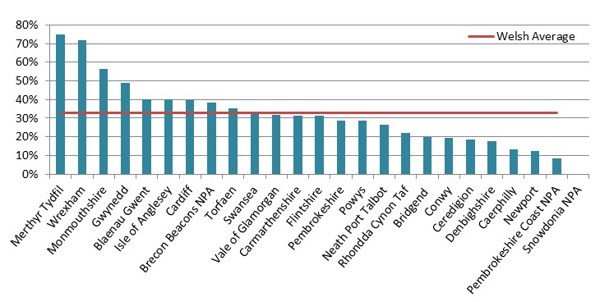Only 48 hours after recently submitting a planning application for the change of use of a commercial unit in Wales, we were advised that it was not valid despite us meeting all statutory requirements. After much to-ing and fro-ing, the application was registered by the local planning authority (LPA) as it was, indeed, valid. It gets worse. Before it was validated, we were also told by the LPA that the application had been reviewed by the highway authority and that it would have to be refused. And to cap it all, we were told that the application was likely to give rise to public objections and therefore we should revise the proposal. All this before the statutory consultation process had even begun, and before due process had been followed. The highway authority never did raise any objections to the proposed development. Whilst non-validation is not a regular occurrence, neither is it rare. Even more recently, a London borough planning officer point blank refused to accept an amendment to a similar application and forced us to withdraw rather than seeking to address the issues raised during the consultation. The reason? The ‘pile of applications waiting on his desk’.
Our experience of LPAs is usually far more positive but in a few cases, some have chosen to take a systems approach to handling planning applications in a bid to be more efficient. One would not complain about efficiency, usually. However, there appeared to be little flexibility in the approach that the LPAs had taken and, in the case of the first example, it did not make for a constructive start to the 8-week determination period ahead of us. It would seem that performance indicators associated with target determination periods are at least in part behind these experiences.
Figure 1: Percentage of "major" applications determined within time periods required January 2015 - December 2015

N.B. There was no data for Snowdonia National Park Authority | Source: Welsh Government Planning Performance Framework Table (February 2016)
At times, I’m sure that LPAs feel that they are stuck between a rock and a hard place. Agents often need an application determined positively as quickly as possible. There are occasions, on the other hand, when we want to spend time fully exploring competing issues resulting in the determination process taking longer than the targets allow. Ideally, there will have been some pre-application consultation between the Council and the applicant (or their agent) before the submission is made but for many reasons this is not always possible. We welcome any authority that works positively with us and the applicant to get the best development within the constraints of the project. The difficulties arise when LPAs are pushed into a corner to ensure that they are meeting performance targets. These create barriers that force an applicant into either withdrawing and resubmitting, or taking a refusal and appealing that decision in cases where having a little more discussion would avoid additional time and expense for all parties.
In Wales, we are in the middle of a
Positive Planning revolution, okay perhaps not a revolution, but a change agenda. The Welsh Government is making legislative, policy and culture changes. I’m not aware of anyone who objects to the overall intention of these changes (although some of the details might have been better drafted to greater effect). But, meeting performance indicators that are set in legislation raises concerns for me, and many applicants.

‘Planning Performance Framework Indicators and Targets’ grade authorities across a range of categories into three performance bands: ‘Good’, ‘Fair’ or ‘Improve’. ‘Efficiency’ is one of the sets of indicators. Is there a risk that the barriers we have recently experienced could worsen? This would indeed seem a possibility. Annual reports are to be prepared by LPAs and are reviewed by the Welsh Government. The first reviews are due to be published this spring. The final criteria for designating an authority as poorly performing are to be consulted on later this summer. It is likely that it will be against these indicators that LPAs will be measured for persistent under-performance. When commenced, provisions in the Planning (Wales) Act 2015 will allow applicants to bypass persistently failing planning authorities and to submit applications direct to the Welsh Ministers.
If this is the stick that could see recent negative experiences increase, we have to find opportunities to work through this challenge. There are two obvious approaches that we can adopt. While attracting a sum of £190 (for major applications), amendments to planning applications give LPAs an additional 4 weeks on top of its target timescale. This could be used to encourage LPAs to work with applicants to address issues of concern instead of refusing an application simply to avoid a big black mark in its performance. Four weeks is not altogether welcomed by many clients but it will inevitably be more time and cost effective than seeking to resubmit or appealing a refusal.
There may also be the option to deal with unresolved details by condition in some circumstances. This in itself can give rise to its own problems, particularly where they go undetermined and a developer needs to start on site. However, an additional condition would generally be more productive than a refusal where the development would be unacceptable without the additional detail.
All in all, performance indicators can be helpful but it is not yet clear the extent to which LPAs will be able and willing change their existing cultures, such as in the example above, and will continue to be driven entirely by the target determination timescales. These in the not so distant future will decide whether or not the LPA will be classed as poorly performing or not. And well, that’s another blog altogether.





